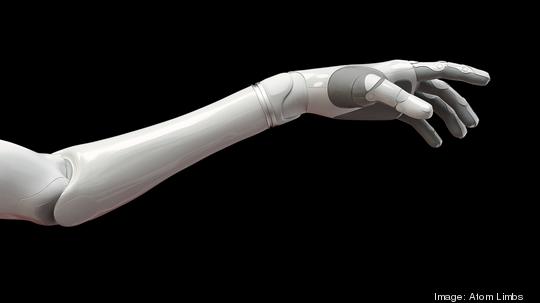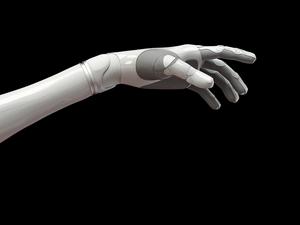
What if you could compose and send an email on a smartphone without all that tapping or swiping?
A South San Francisco startup says it is developing a consumer wearable that will allow people to operate their phones with just their thoughts — and it thinks it can do it better than well-resourced companies like Neuralink and Meta.
Wispr was founded in 2021 by CEO Tanay Kothari and CTO Sahaj Garg, a couple of computer science majors who met in 2016 as incoming first-year students at Stanford when they were paired together as dorm mates.
On Monday, they announced that the company had raised an additional $10 million in equity and debt through what it calls a Seed II round, bringing its total funding to $14.6 million.
“The goal that we have here is taking everything that we see as given with smartphones and all the personal computing that we use and really looking at that and questioning it," Kothari said. "Why do things need to be this way? And could we make it more natural so that we’re not stuck looking down on these small little rectangles and tapping on tiny 2-inch keyboards for the rest of our lives and what would that look like?”
So, what exactly are they building at Wispr? Reading glasses? A hat? Some sort of bionic sleeve? Kothari and Garg are tight-lipped about the designs.
It will be a consumer wearable, not a medical device, they told me, that will tap into the electrical signals pulsing through our bodies. The goal is translate those signals into actions.
They're targeting a public launch of its first product by 2024 or 2025, and the first generation will likely be priced as a luxury "pro" model.
Kothari's interest was inspired by JARVIS, the virtual assistant in Marvel's “Iron Man” movie. He told me he built a voice assistant with a friend in 2008.
Kothari also founded an e-commerce business intelligence company in 2019 called FeatherX. It was acquired by San Francisco-based Cerebra Technologies in 2020 for an undisclosed amount.
Wispr is challenging some well-funded competition in the brain-computer interface industry. It's a notoriously difficult, slow and costly endeavor.
Elon Musk's startup, Fremont-based Neuralink, has been developing its own mind-control technology since 2016 through an invasive process that requires implanting wires into the brains of monkeys. Eventually, the company wants to implant wireless chips into human brains — still requiring an invasive procedure.
Neuralink has raised around $363 million and has 300 employees. Musk is pushing back a public demo that was originally scheduled for Oct. 31 to the end of November.
Before it was known as Meta, Facebook announced in 2017 that it had begun its own research to develop non-invasive wearables that would "let people type with their brains." It's not clear how much it spent on the project, but shut it down four years later, according to MIT Technologoy Review.
Wispr has around 4% of Neuralink's funding and only nine full-time employees, but its founders are confident that its team has the expertise and drive to deliver a functional and intuitive product that will eventually help people peel away from their phones.
It's not a metaverse company, though.
"I feel like we play into the realm of immersive computing," Kothari said. "We're trying to not go into the virtual reality world but let people be more present in the real world with computing that's more immersive and omnipresent."
Scientists and entrepreneurs have also been trying to capture electrical signals from the brain to develop prosthetic limbs that will allow people with amputated limbs to use their prosthetics seamlessly and intuitively. Among them, a San Carlos startup called Atom Limbs that is developing a full arm for above-the-elbow amputees.

Other types of hands-free wearables have had mixed success.
Google unveiled its augmented reality glasses in 2012. It was code named Project Glass and eventually became known as Google Glasses. At the time, then-Lt. Gov. Gavin Newsom donned a pair during an episode of his talk show. But the product caused an uproar both for its ugly design but more importantly around privacy concerns — it allowed the wearers to subtly take photos.
Google stopped selling the glasses in 2015.
Snapchat's parent company first released its own augmented "spectacles" in 2016. The Verge called Snap's most recent version of its AR-powered Spectables "ambitious" but "impractical." Even Snap co-founder and CEO Evan Spiegel doesn't think these glasses will become mainstream for at least a decade, according to the NYT.
Apple has been developing its own mysterious mixed reality headset combining elements of virtual and augmented reality. The company is aiming for a launch by the end of 2023, according to Bloomberg News.
Microsoft has also developed a mixed reality headset it calls the HoloLens, but it has marketed it more as an enterprise tool than a consumer product. But in recent field testing with the U.S. Army, soldiers developed "headaches, eyestrain and nausea" while using the headsets, also according to Bloomberg News.








